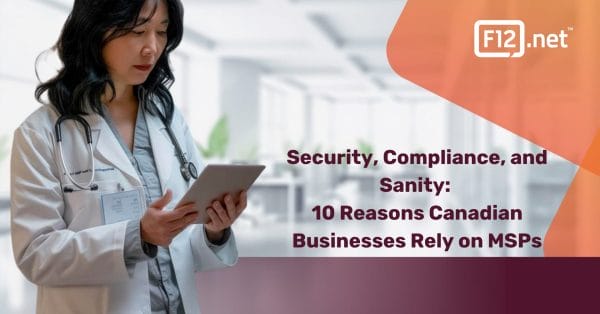Brief: Passwords are no longer enough to protect sensitive information in today’s digital age. This guide explores Multi-Factor Authentication (MFA)—a simple, yet effective solution to enhance your organisation’s security. Learn what MFA is, why it’s critical, and how to implement it in your business step-by-step.
“Security is not a product, but a process.”
— Bruce Schneier, Security Technologist
Passwords are the cornerstone of our digital security, but in today’s cyber landscape, they’re often not enough. Hackers have become increasingly adept at stealing or guessing passwords, and once they do, your entire network could be at risk.
That’s where Multi-Factor Authentication (MFA) comes in—a simple, effective, and easy-to-implement solution that adds an extra layer of security to keep your business and data safe.
In this guide, we’ll explore why MFA is essential, how it works, and how your organisation can implement it effectively to protect against cyber threats.
Why Passwords Alone Aren’t Enough
No matter how complex your password might be, it’s often not enough to protect sensitive data from determined attackers. Here’s why:
- Password Reuse: Many people reuse the same password across multiple accounts, making it easier for hackers to gain access to multiple platforms if one password is compromised.
- Phishing Attacks: Hackers use social engineering to trick users into revealing their passwords. Even the most vigilant employees can be fooled.
- Credential Leaks: Massive data breaches frequently expose passwords, which hackers can use to attempt access on various platforms.
When these weaknesses are exploited, the costs can be devastating—lost data, stolen identities, financial loss, and even reputational damage.
Enter Multi-Factor Authentication (MFA)
Multi-Factor Authentication is a simple yet powerful way to add an extra layer of security to your accounts. It requires users to provide two or more forms of verification before accessing sensitive data. Even if a hacker gets hold of a password, the additional verification steps make it nearly impossible for them to gain access.
How Does MFA Work?
MFA works by requiring users to provide a combination of:
- Something You Know: A password or PIN.
- Something You Have: A one-time code sent to a mobile device or an authentication app.
- Something You Are: Biometric verification, such as a fingerprint or facial recognition.
By requiring multiple factors, you create a strong defense against cyber attacks.
Benefits of Implementing MFA in Your Organisation
- Enhanced Security: MFA dramatically reduces the likelihood of a successful cyber attack, even if passwords are compromised. Attackers would need access to both your password and your second verification method—making their job much harder.
- Compliance and Trust: Many regulations require the implementation of MFA to meet compliance standards. Adding MFA also builds trust with clients and stakeholders by showing your commitment to security.
- Ease of Use: Contrary to popular belief, MFA is easy to set up and use. With modern authentication apps, users can approve login requests with a single tap, adding only a few seconds to the login process while greatly enhancing security.
Implementing MFA: A Step-by-Step Guide
The best part about MFA is how straightforward it is to implement. Here’s a simple plan to help you get started:
1. Assess Your Needs
Identify which systems, applications, and accounts are most at risk. Start by enabling MFA on accounts that hold the most sensitive information. This includes email accounts, financial systems, and any applications containing customer data.
2. Choose the Right MFA Solution
There are many MFA tools available today, from SMS codes to authentication apps like Google Authenticator, Authy, or Microsoft Authenticator. Choose a solution that fits your organisation’s needs based on:
- Security: Opt for authentication methods that are harder to compromise, such as biometric verification or app-based authentication codes over SMS.
- User Convenience: Consider how easily your team can adopt the solution. The more user-friendly it is, the more likely your team will use it effectively.
3. Set Up MFA for Your Systems
Once you’ve chosen your solution, start by enabling MFA on your most critical systems. This typically involves:
- Admin Setup: Configuring MFA settings at the administrator level.
- User Enrollment: Guiding your employees through enrolling in MFA, which may include linking their phone numbers or downloading an authentication app.
4. Educate Your Team
Education is key. Make sure your team understands why MFA is important and how it works. Provide a simple guide for setting up MFA on their devices and allow time for any questions or troubleshooting.
Tips for Success:
- Training Sessions: Hold a quick training session or webinar to walk employees through the setup.
- Regular Reminders: Send periodic reminders about the importance of using MFA, especially for new employees.
5. Test and Monitor
After rolling out MFA, run tests to ensure it’s working correctly across all systems. Monitor adoption rates and look for any gaps. Ensure that MFA is enabled wherever possible, and regularly audit your systems to ensure compliance.
Overcoming Common Barriers to MFA Adoption
One of the biggest barriers to MFA adoption is the perception that it’s cumbersome. It’s true—MFA does add a small step to the login process, but the benefits far outweigh the inconvenience. When your team understands the significant reduction in risk that MFA brings, they’ll be much more willing to adopt it.
Another challenge can be technological hurdles. Choosing a user-friendly MFA solution and making it a seamless part of the login process will help ease these concerns.
Real-World Example: How MFA Saved the Day
Consider the case of a mid-sized organisation that experienced a phishing attack. The attackers managed to obtain several passwords, but thanks to MFA being implemented, they were blocked from accessing critical systems. Instead of a costly data breach, the company simply issued a warning, instructed employees to reset their passwords, and carried on with their business uninterrupted.
Take Action Today: Secure Your Organisation with MFA
Cyber threats are evolving every day, but adding an extra layer of security through Multi-Factor Authentication is one of the easiest ways to stay ahead of attackers. MFA ensures that, even if passwords are compromised, your data remains safe and your business continues running smoothly.
There’s no time like the present to start implementing MFA. Your team can enable it today and immediately start benefitting from the extra protection it provides.
Ready to secure your organisation? Follow the steps above to implement MFA across your key systems today.
In a world where cyber threats are constantly evolving, Multi-Factor Authentication is a simple yet crucial defense against attacks. It provides that much-needed extra layer of security that can make the difference between a successful breach and a failed attempt. Implementing MFA today is a smart, proactive move to ensure the security and resilience of your business.
Let’s make your business cyber secure—one extra step at a time.



